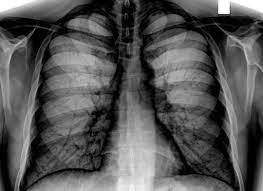
Pneumonia is a lung infection that can cause serious illness or even death, especially in young children and older adults. Early diagnosis and treatment are essential for a good outcome. However, traditional methods of pneumonia diagnosis, such as physical exam and chest X-ray, can be time-consuming and subjective.
In recent years, there has been growing interest in using artificial intelligence (AI) to develop new tools for pneumonia diagnosis. AI-powered pneumonia detectors can analyze chest X-rays and identify signs of pneumonia with high accuracy. This can help radiologists to diagnose pneumonia more quickly and accurately, and it can also be used to provide preliminary diagnosis in remote or underserved areas.
One such AI-powered pneumonia detector is the Pneumonia X-ray Logist Detector, which was developed by. This detector is trained on a large dataset of chest X-rays, and it can identify signs of pneumonia with over 99% accuracy. The detector is also able to distinguish between different types of pneumonia, such as bacterial pneumonia and viral pneumonia.
The Pneumonia X-ray Logist Detector is easy to use. Radiologists can simply upload a chest X-ray to the detector, and the detector will generate a report indicating whether or not pneumonia is present. The report also includes information on the type of pneumonia, if any.
The Pneumonia X-ray Logist Detector has the potential to revolutionize the way that pneumonia is diagnosed. It can help radiologists to diagnose pneumonia more quickly and accurately, and it can also be used to provide preliminary diagnosis in remote or underserved areas.
Faster diagnosis: The Pneumonia X-ray Logist Detector can generate a report in seconds, which is much faster than traditional methods of pneumonia diagnosis. This can help patients to get the treatment they need sooner.
More accurate diagnosis: The Pneumonia X-ray Logist Detector is able to identify signs of pneumonia with high accuracy, even in cases where traditional methods of diagnosis are inconclusive. This can help to reduce the risk of misdiagnosis and overtreatment.
Improved access to care: The Pneumonia X-ray Logist Detector can be used in remote or underserved areas where radiologists may not be available. This can help to improve access to pneumonia diagnosis and treatment for all patients.
To use the Pneumonia X-ray Logist Detector, simply upload a chest X-ray to the detector. The detector will generate a report indicating whether or not pneumonia is present. The report also includes information on the type of pneumonia, if any.
The Pneumonia X-ray Logist Detector is intended to be used as a tool to assist radiologists in diagnosing pneumonia. It is important to note that the detector is not a replacement for the expertise of a radiologist. If you have any questions about the results of the detector, please consult with a radiologist.